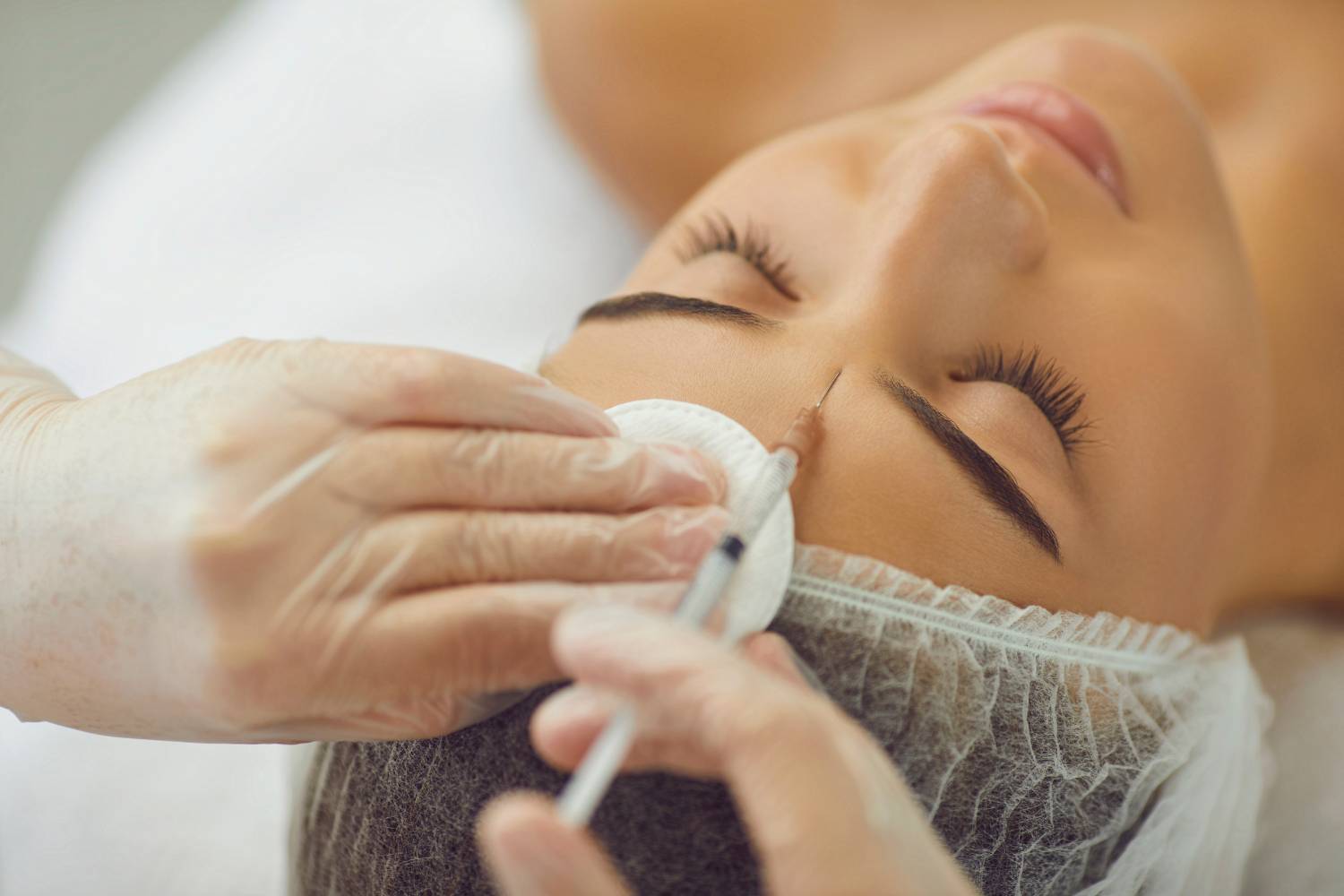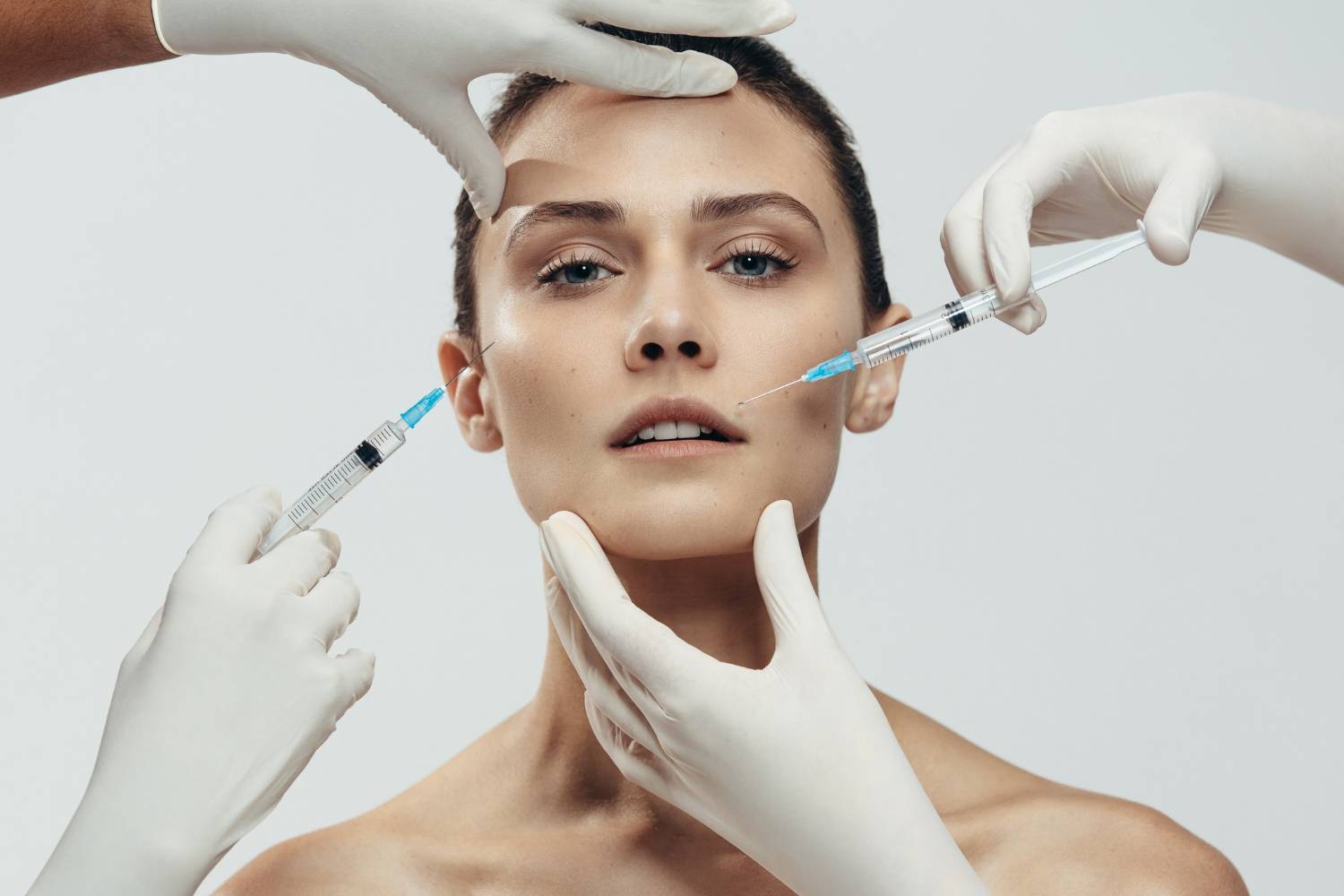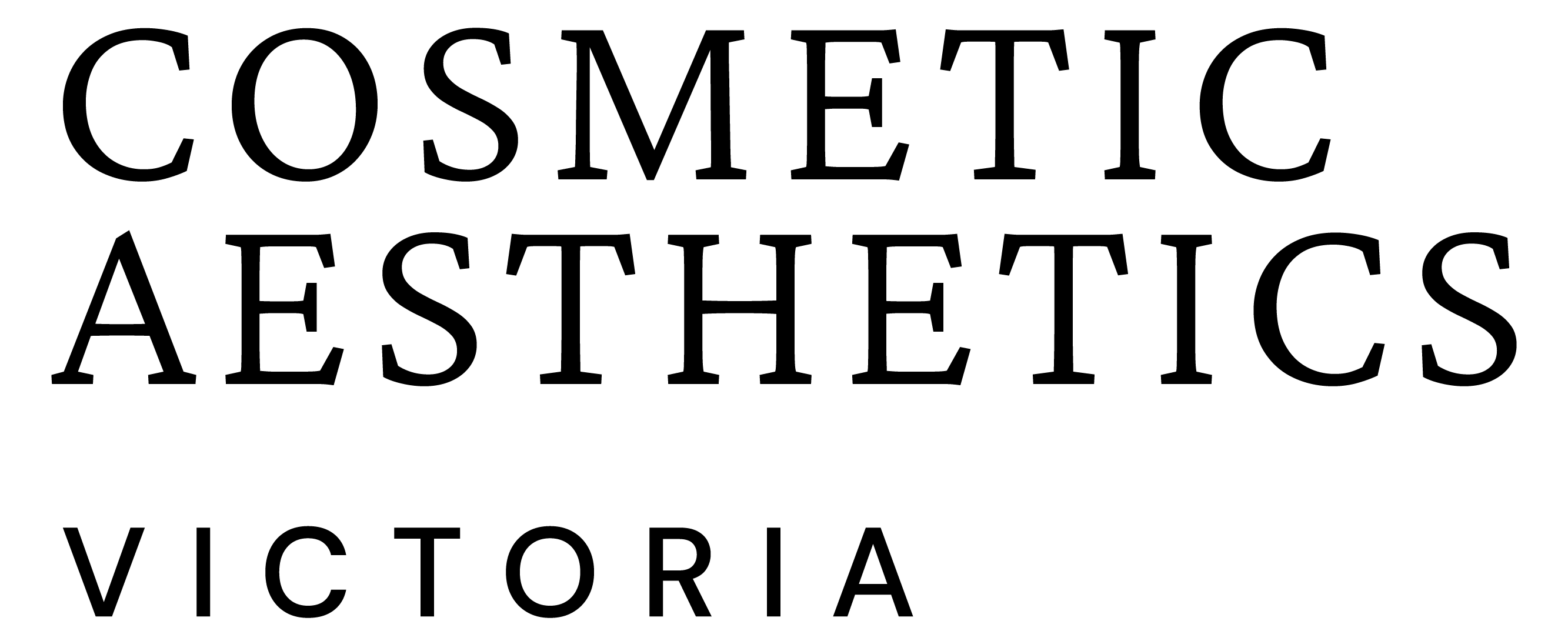5 mistakes people make when it comes to injectables
Injectable treatments like Botox and dermal fillers are becoming increasingly popular, offering non-surgical ways to enhance your appearance. Whether you’re looking to reduce fine lines, add volume, or rejuvenate your face, injectables can achieve great results. However, many people make common mistakes that can result in suboptimal outcomes, unexpected complications, or even serious risks.
In this blog, we’ll walk through the five most common mistakes people make with injectables and provide clear advice on how to avoid them.

1. Choosing The Wrong Injector
Choosing the wrong injector is, without a doubt, the most significant mistake you can make. I can’t stress this enough: when it comes to injectables, the provider is far more important than the product itself. Your results depend heavily on their skill, knowledge of facial anatomy, and ability to achieve natural, balanced outcomes.
Why Experience Matters More Than Price?
It’s easy to get swept up in the temptation of a bargain. However, I’ve seen time and again that choosing an injector based solely on price or a quick deal can lead to serious regrets. Price often correlates with experience. Cheaper treatments may seem like a good deal, but they can come at a high cost in terms of results, complications, and corrective procedures.
Take Emma, for example. She came to me after getting Botox at a discount clinic. Although the price was right, the results were far from it. She ended up with uneven brows and a frozen expression. The issue wasn’t the product—it was the lack of precision and understanding of facial anatomy from the injector. Botox requires careful placement and knowledge of the facial muscles to create a natural, relaxed appearance. When the injector lacks this expertise, the results can be far from flattering.
A skilled injector knows the anatomy of the face like the back of their hand. They understand how the muscles interact, which areas to target for the best results, and how much product to use. They also have the artistic eye to make your face look rejuvenated but still like you.
How To Avoid This Mistake:
- Research your provider: Always check their credentials and experience.
- Ask the right questions: How long have they been practising? What training do they have? Can they show you before-and-after photos of previous clients?
- Avoid the cheapest options: While prices vary, always choose an injector who is highly qualified, even if it means paying a little more. Your face is worth the investment.
2. Chasing Bargains
It’s tempting to look for discounts or special offers when booking your injectable treatments, but this is one of the most common mistakes people make. When you opt for bargain treatments, you’re often sacrificing quality and safety.
How Price Can Reflect Product Quality And Safety
I’ve had numerous clients come to me after receiving Botox or dermal fillers at discount clinics. The most common theme among these clients? They were disappointed with their results and often experienced side effects like bruising, swelling, or uneven results. In some cases, clients even ended up with infections due to poor hygiene practices at bargain clinics.
Let me share the story of Sarah, who came to me after seeing an online ad for “cheap lip fillers.” She thought she’d found a deal, but the product used was diluted, and the filler didn’t last as long as expected. Worse, she developed a lump in her lip, which required an expensive corrective procedure to fix.
When clinics offer deals that seem too good to be true, they often use counterfeit products, expired materials, or cheaper alternatives that aren’t FDA-approved. Cutting costs means cutting corners, and this can lead to severe complications down the road.
How To Avoid This Mistake:
- Prioritise quality over price. Ensure the clinic uses reputable, FDA-approved products.
- Ask about the injectables being used and where they are sourced.
- Don’t opt for discount treatments that seem too cheap—chances are, they come with hidden costs in terms of results and risks.
3. Skipping The Consultation
The consultation is a crucial step before getting any injectable treatment. It’s your chance to discuss your goals, address any concerns, and ensure you and your practitioner are on the same page. Skipping this step or rushing through it can lead to miscommunication, unrealistic expectations, and poor results.
Why A Proper Consultation Is Crucial
I’ve seen clients make the mistake of jumping straight into treatment without fully understanding the procedure. In one case, Rachel came to me after having Botox done at a clinic where the consultation was rushed, and no one took the time to really assess her facial structure. As a result, her Botox was injected incorrectly, causing uneven results and a stiff, unnatural look.
A proper consultation allows your injector to analyse your facial anatomy, ask questions about your medical history, and discuss your expectations. It’s also a time for the practitioner to help manage your expectations by explaining what the injectables can realistically achieve. If you feel rushed or pressured into treatment, walk away. You should never feel like you’re being “sold” a procedure.
How To Avoid This Mistake:
- Don’t skip the consultation. Ensure it’s thorough, where your injector listens to your goals, answers your questions, and creates a tailored plan for your treatment.
- Communicate openly about your concerns and expectations.
- Be cautious of quick, “drive-thru” appointments—good injectors will never rush you.
4. Unrealistic Expectations
Injectables are a great way to enhance your natural beauty, but they’re not miracle workers. I can’t tell you how many times clients come in with expectations shaped by filtered Instagram images or celebrity beauty standards, expecting their injectable treatments to work wonders. Unfortunately, this can often lead to disappointment when the results don’t match their idealised vision.
The Truth Behind Social Media Filters And Celebrity Looks
Olivia came to me with an Instagram image of a celebrity she admired, saying she wanted exactly the same lips. While we discussed the possibility of achieving fuller lips, I also explained that injectables can enhance, but they can’t create a completely different face. Every face is unique, and your injector’s job is to enhance your features naturally, not make you look like someone else.
Social media often distorts the reality of what injectables can achieve, with heavily edited photos creating unrealistic expectations. Injectables are a tool, not a magical transformation. When I work with clients, I always ensure they understand that they will look refreshed and rejuvenated, but injectables are not going to make them look 20 years younger or completely change their facial structure.
How To Avoid This Mistake:
- Understand what injectables can and can’t do. Talk to your injector about the realistic outcomes you can expect based on your unique anatomy.
- Don’t rely on Instagram filters or celebrity photos to dictate your goals.
- Set realistic expectations and be open to your injector’s professional advice.
5. Not Following Aftercare Instructions
Aftercare is just as important as the treatment itself. I can’t emphasise enough how often I see clients who ignore post-treatment guidelines, only to end up with swelling, bruising, or even infections. It’s crucial to follow all aftercare instructions to ensure the best results.
Why Proper Aftercare Is Essential?
When Sophie came in for lip fillers, I gave her clear aftercare instructions, including avoiding makeup for at least 6 hours and not massaging the treated areas. Unfortunately, she ignored these instructions, applied makeup too soon, and began rubbing her lips. She ended up with uneven filler distribution and more swelling than necessary.
The aftercare process is designed to allow the product to settle correctly, minimise complications, and prolong the results. Failing to follow these steps can affect the longevity of your injectables and, in some cases, cause complications that may require further treatment to fix.
How To Avoid This Mistake:
- Follow all aftercare instructions provided by your injector, including avoiding makeup, exercise, and excessive sun exposure for a few days.
- Don’t touch or massage the treated areas unless instructed to do so.
- Be patient—it may take a few days for the swelling and bruising to subside, and the final results can take a few weeks to fully settle.
Injectable Alternatives: When To Consider Other Treatments

While injectables are an excellent solution for many people, they are not always the right option for everyone. In some cases, other treatments like laser therapy, chemical peels, or microneedling may be more suitable for achieving your aesthetic goals.
When Should You Consider Alternatives To Injectables?
For individuals who have more significant skin laxity or deep wrinkles, non-surgical treatments like laser skin resurfacing or radiofrequency skin tightening might offer better results. Microneedling with PRP (Platelet-Rich Plasma) is another option for stimulating collagen production and improving skin texture, especially for acne scars and fine lines.
While injectables are ideal for those seeking to add volume or smooth wrinkles, they don’t address all skin concerns. If you have more severe skin sagging or are looking for a more long-term solution, it may be worth exploring alternative treatments.
How To Avoid Choosing The Wrong Treatment:
- Be open to discussing multiple options with your practitioner, especially if your concerns go beyond what injectables can achieve.
- Consider combinations of treatments (e.g., Botox + laser resurfacing) for a more comprehensive approach.
How To Know When It’s Time For A Touch-Up Or Adjustment?
Injectables, whether it’s Botox or dermal fillers, provide a temporary boost to your appearance. Over time, the effects will naturally fade as the body absorbs the product, and it’s important to know when it’s time for a touch-up or adjustment to keep your results looking fresh and natural.
How Long Do Botox And Dermal Fillers Last?
The longevity of your injectable treatment depends on several factors, including the type of product used, the area treated, and your body’s natural response. Here’s a breakdown of what to expect:
- Botox: Most people find that Botox lasts between 3-4 months. After this time, the treated muscles gradually regain their full movement, and fine lines may start to reappear. Some clients may notice frown lines or crow’s feet returning before others, indicating it’s time for a touch-up. Regular touch-ups can help maintain smooth skin and prevent deep wrinkles from forming.
- Dermal Fillers: Fillers such as hyaluronic acid tend to last around 6 to 12 months, depending on the type and where they were injected. For example, lip fillers may wear off sooner, while cheek fillers may last longer. Over time, as the product breaks down, you’ll begin to notice a loss of volume, especially in areas like the cheeks or under the eyes.
Signs It’s Time For A Touch-Up
Knowing when to go in for a touch-up can be tricky, but there are a few key signs that indicate it’s time to book your next appointment.
- Lines Begin to Reappear: With Botox, you’ll notice that the fine lines you once had are gradually starting to return. If you had Botox for crow’s feet, forehead lines, or frown lines, you may see these wrinkles creeping back in as the product begins to wear off.
- Loss of Volume: For dermal fillers, one of the first signs that it’s time for a touch-up is volume loss. If you had fillers for your cheeks, lips, or under-eye area, and you start to notice the fullness fading, it’s a good time to consider an adjustment. You may also notice the appearance of sagging or drooping as the filler breaks down.
- Uneven or Asymmetrical Results: Occasionally, the filler can settle unevenly, leading to lumps or uneven distribution. This can be corrected with a small touch-up to smooth everything out. If you notice any unevenness or discomfort, it’s important to address it sooner rather than later.
- Less Movement or Expression: With Botox, a telltale sign that it’s wearing off is the return of muscle movement. If you notice that you’re able to furrow your brow or smile fully without resistance, it’s time for a touch-up to maintain that smooth, wrinkle-free look.
- General Fading of Results: Over time, all injectables will start to fade, and while the exact timeline varies for each individual, it’s common to notice gradual fading in about 3-4 months for Botox and 6-12 months for fillers.
How To Make Sure Your Injectable Treatment Is A Success?
Achieving the best possible results with injectables comes down to education, communication, and the right choices. Whether it’s understanding the importance of choosing a qualified professional, managing your expectations, or following aftercare instructions, you can ensure a smooth experience and natural-looking results.
I always tell my clients, “Injectables are not a race – they are a journey.” Start slow, understand what you’re trying to achieve, and don’t be afraid to ask questions. The right approach, with the right expert, will give you the results you’ve always wanted.
Injectables can be a fantastic way to enhance your natural beauty, but as with any medical procedure, it’s crucial to avoid common mistakes to achieve the best results. By choosing a qualified injector, setting realistic expectations, attending a thorough consultation, and following pre- and post-treatment care, you’ll be on the path to a safe, effective, and natural-looking outcome.
Injectables are a great investment in your appearance, but to get the most out of them, be sure to do your research, ask the right questions, and prioritise quality. Remember, a little knowledge goes a long way when it comes to achieving your aesthetic goals safely.
Are you considering cosmetic injectables? Book in for a private consultation today by calling 0450927511.
